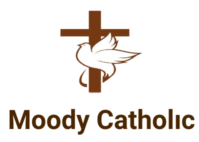Exploring the Four Gospels
Unlocking the Symbolism
The four Gospels of the New Testament — Matthew, Mark, Luke, and John — are not only seminal Christian texts but also repositories of profound symbolic representations. These symbols convey deeper meanings and serve as powerful tools to connect with the reader’s faith.
In this blog post, we will delve into the symbolism within each Gospel, offering insight into their rich metaphorical language.
Gospel of Matthew – The Winged Man
Matthew’s Gospel is often associated with the symbol of a winged man. This symbol represents the human nature of Jesus Christ. Just as angels are heavenly messengers, the winged man denotes the Gospel’s aim to show Jesus in His role as the Son of Man.
Through Matthew’s account, we witness Jesus’ teachings, miracles, and the fulfillment of Old Testament prophecies, providing a comprehensive view of Jesus’ humanity.
This blog post contains affiliate links. When you click on a link on this page and make a purchase I may earn a small commission, at no additional cost to you. Thank you for your support.
Gospel of Mark – The Lion
In the Gospel of Mark, the symbol of a lion is prevalent. The lion embodies power, strength, and authority, reflecting the Gospel’s emphasis on Jesus’ divinity. Mark presents Jesus as the “Lion of Judah,” portraying His fearless and majestic nature.
This Gospel swiftly takes the reader through the dramatic events of Jesus’ ministry, emphasizing His sovereignty over sin and evil.
Gospel of Luke – The Ox
The symbol associated with the Gospel of Luke is an ox or a calf. The ox is known for its willingness to serve and carry heavy burdens—a fitting representation of Jesus’ sacrificial nature. Luke’s Gospel provides a detailed and compassionate account of Jesus’ life, emphasizing His role as the ultimate sacrifice for humanity.
Luke’s emphasis on Jesus’ compassion, healing, and inclusive message resonates strongly with the symbolism of the ox.
Gospel of John – The Eagle
The Gospel of John is symbolized by an eagle, a creature evoking wisdom, insight, and a soaring perspective. This symbolism corresponds to John’s lofty theological discourse, focusing on Jesus’ divinity and His profound teachings.
Just as an eagle soars high above, John’s Gospel presents a higher understanding of Jesus, exploring His pre-existence, His eternal nature, and His close relationship with God the Father.
Uniting the Symbols for a Deeper Understanding
Though each Gospel possesses its own distinct emphasis, these symbols collectively enhance our comprehension of Jesus’ multifaceted nature. The winged man, the lion, the ox, and the eagle offer differing perspectives while forming a cohesive portrayal of Jesus as both fully human and fully divine.
By exploring these powerful symbols, we heighten our connection with the sacred texts, inviting a deeper understanding of Jesus’ life, teachings, and significance in our faith. Let us uncover the layers of symbolism contained within the Gospels, allowing them to illuminate our spiritual journeys.
May the symbolism within the Gospels enrich your relationship with Jesus Christ, leading to a deeper appreciation of His profound love and grace.
